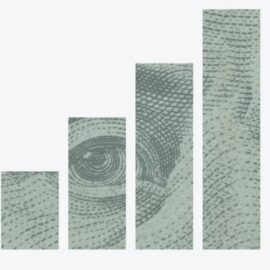

This article is an excerpt from the Shortform summary of "Nudge" by Richard H. Thaler and Cass R. Sunstein. Shortform has the world's best summaries of books you should be reading.
Like this article? Sign up for a free trial here .
What is loan risk? How does loan risk affect the outlook for taking out student loans and mortgages?
Loan risk is any potential pitfall of issuing a loan. Borrowers get poorer terms when the lender sees risks.
Read on to understanding loan risk and the impact on borrowers for student loans and mortgages.
What Is Loan Risk?
From mortgages to student loans to credit cards, Americans are some of the most indebted people on the planet. Yet most people have no idea what kinds of loan risk they’re taking on when they borrow. Here are some nudges to ensure borrowers are making informed decisions.
Student Loan Risks
Aspiring students without the financial means to cover the astronomical cost of college are faced with onerous paperwork (the Free Application for Federal Student Aid, or FAFSA, which can take students longer than the college application itself). They’re also preyed upon by unscrupulous lenders and college financial aid offices (who, in the worst cases, enter into agreements with lenders to take advantage of student borrowers).
One nudge to help student borrowers would be the simplification of the FAFSA. Reducing the number of questions is an obvious emendation; another might be to make all student loan applications, whether for federally subsidized or private monies, uniform. The FAFSA could also be bundled with—or partially completed by the information from—tax returns for qualifying families.
Another nudge is encouraging early saving to avoid loans altogether. In an ongoing study, middle-schoolers and their parents are nudged to invest in a college savings account (a “529”) by receiving a $100 bonus for signing up for one. This would avoid loan risk completely.
Mortgage Lending Risks Vary by Community
Although various federal statutes have aimed to level the playing field between borrowers and lenders, the contemporary mortgage market is dauntingly complex due to lending risks. Mortgage shoppers now have to know the difference between fixed-rate loans (whose interest rate stays the same for the life of the loan) and variable-rate loans (whose interest rate fluctuates with the market), recognize teaser rates (a lower initial rate that often balloons after that initial period ends), and somehow take into account fees (administrative charges by the issuer), points (payments that result in lower interest rates), and penalties (for example, for paying off the loan early). Otherwise, borrowers won’t understand their loan risk.
Some of these options may benefit a borrower with a particular financial picture, but many of them, as one might expect, tend to benefit the lender. Economist Susan Woodward analyzed over 7,000 loans insured by the Federal Housing Administration and discovered the following:
- People of color pay more: African-Americans borrowers paid an additional $425 on their loans; Latinos, an additional $400.
- Less educated communities pay more: People from neighborhoods where adults only have a high school education paid $1,160 more for their loans than people from neighborhoods with a high concentration of the college-educated.
- Loans from mortgage brokers are more expensive: Mortgage-broker loans were $600 more expensive than those issued by a direct lender.
- Complexities like points and seller contributions harm borrowers: Points and seller contributions to closing costs create additional expense for borrowers, and these additional costs are greater on loans from mortgage brokers than from direct lenders.
As implied by Woodward’s findings, mortgage brokers can take advantage of borrowers, especially when those borrowers are subprime (i.e., at high risk of default). They may be addressing lending risks, but it isn’t always ethical. One way bad-faith brokers can dupe buyers is by inviting them to “customize” their interest rate or monthly payment by paying points on the loan. Since buyers often borrow money to pay the points, this option effectively increases the size of the loan and more often than not results in a bad deal for the borrower. (General rule: Don’t opt for points.)

———End of Preview———
Like what you just read? Read the rest of the world's best summary of Richard H. Thaler and Cass R. Sunstein's "Nudge" at Shortform .
Here's what you'll find in our full Nudge summary :
- Why subtle changes, like switching the order of two choices, can dramatically change your response
- How to increase the organ donation rate by over 50% through one simple change
- The best way for society to balance individual freedom with social welfare






